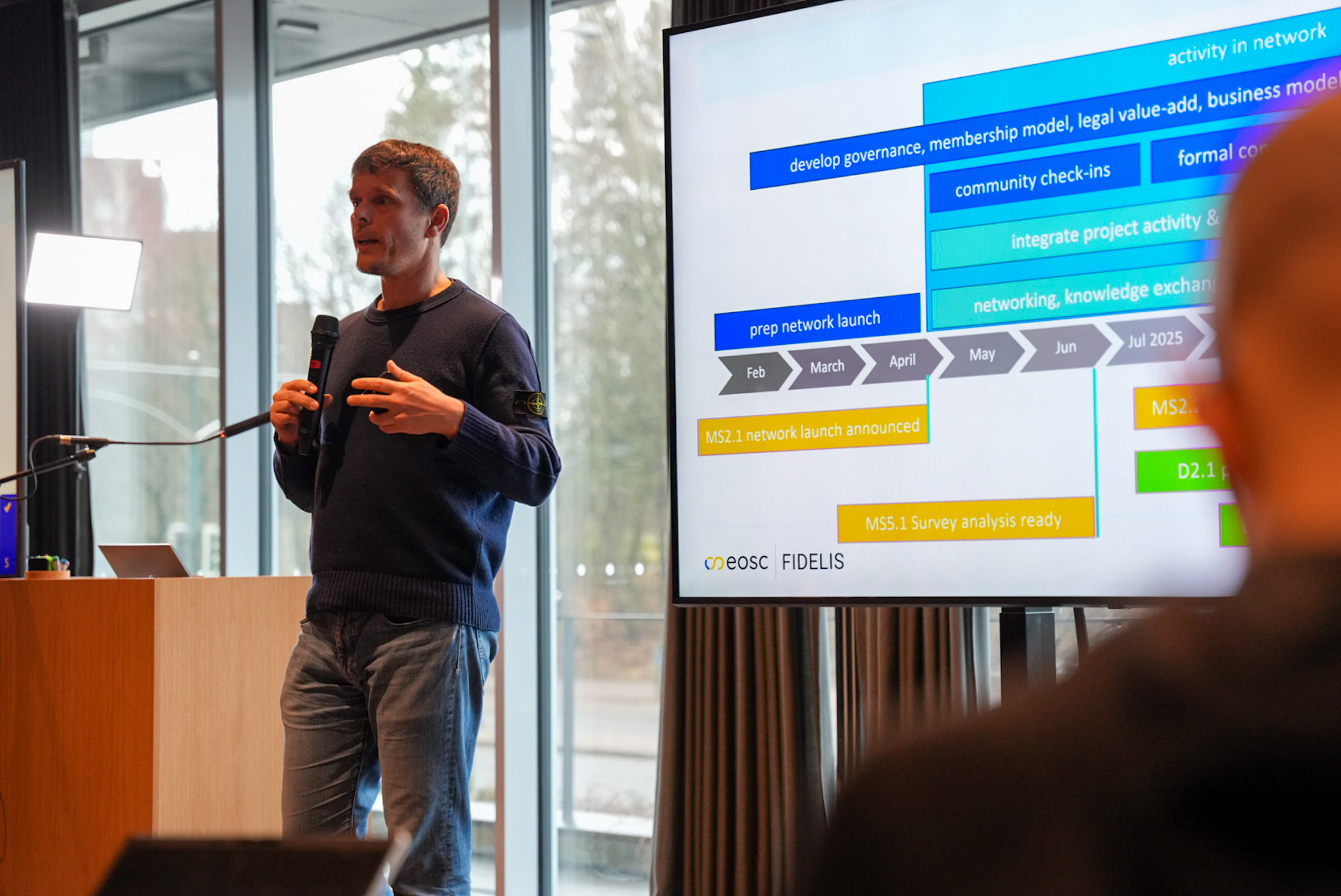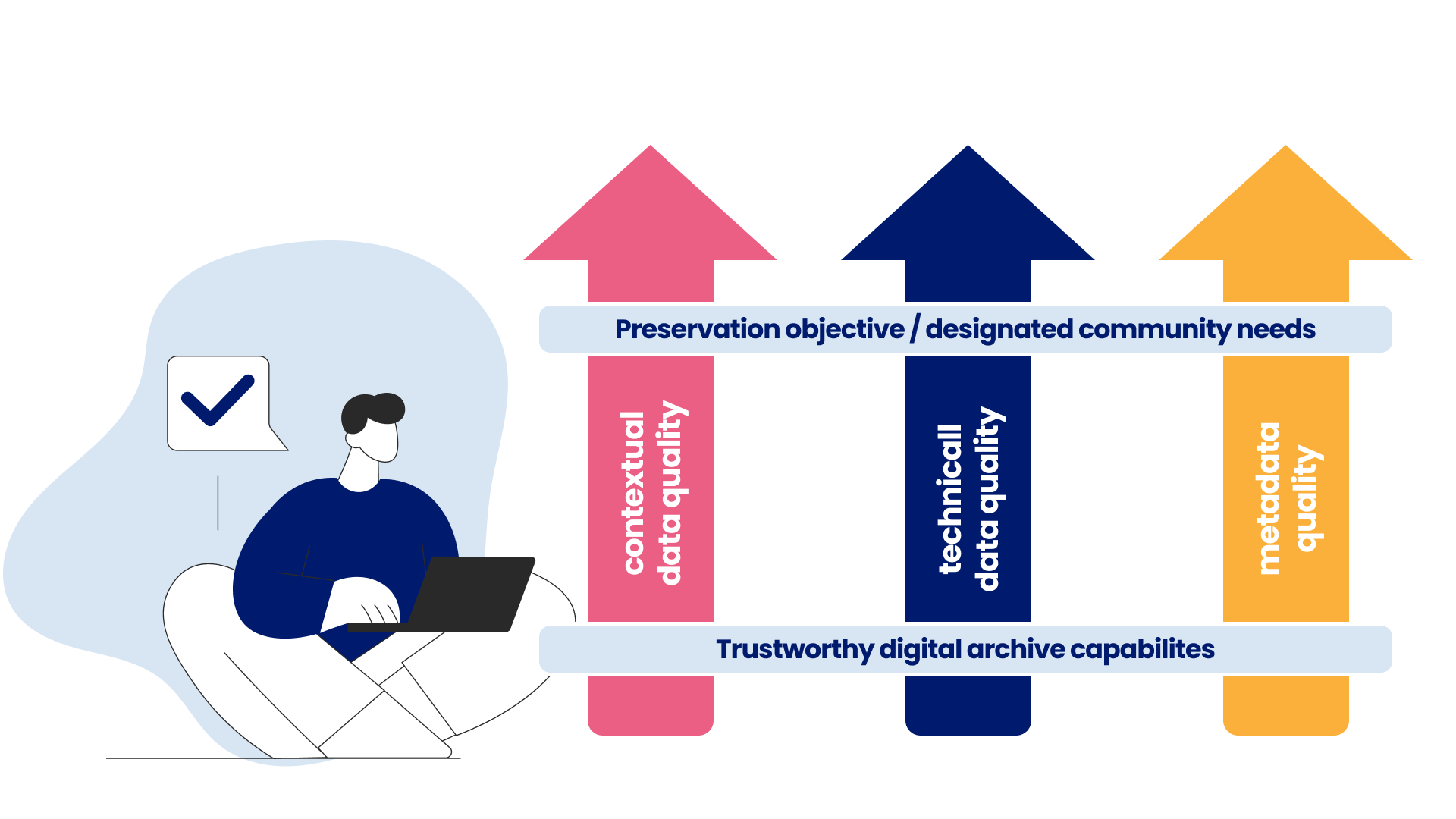Supporting digital repositories in a journey towards increased trustworthiness and FAIR compliance (FIDELIS)
FIDELIS will support repositories in their journey toward trustworthiness and FAIR compliance by developing common frameworks for repository policies and workflows. These frameworks will offer guidance and structured support to the FIDELIS network and repositories in implementing and maintaining best practices in digital object management.
The FIDELIS Matrix is being designed to better understand repositories, and how transparency around the broad range of activities and functions they undertake can contribute to trustworthiness. These activities and functions are influenced by a range of variables, for example the levels of retention, initial curation and active preservation service being offered. Together these indicate what information, from prose policies to structured metadata, should be shared to enable mutual support and engagement.

FIDELIS Matrix ( Introduction of the model)
Digital repositories are integral to the research ecosystem, and FAIR-enabling trustworthy digital repositories are key elements of EOSC. The current repository landscape is diverse in terms of maturity levels and practices, and the definition of what makes a digital repository "trustworthy" is even more volatile. The FIDELIS Matrix (TTRAM) will bring clarity and alignment to the fragmented landscape of digital repositories by providing a reference model to support and guide repositories in achieving a TDR status and to continuously improve their trustworthiness, FAIRness, and sustainability. This approach ensures that repositories also remain adaptable to future advancements in digital preservation.
Watch the Introduction To TTRAM
A Practical Tool for EOSC and Beyond
The FIDELIS Matrix is being designed to better understand repositories and how transparency around the broad range of activities and functions they undertake can contribute to trustworthiness. It will support :
- FIDELIS Network activities that seek to meet community needs and provide a community voice
- Improving repositories by providing a reference model to help repositories meet trust requirements
- Shaping the FIDELIS network membership
- Enabling cooperation, progress, and compliance, including interoperability with the emerging European Open Science Cloud infrastructure
The FIDELIS Matrix makes it easier for researchers, funders, and institutions to identify repositories that meet the highest standards of trustworthiness.
Core Preservation Processes (EOSC EDEN)
Core preservation processes are crucial for preserving digital materials, and ensuring their integrity, security, authenticity, and accessibility over time. However, storage costs and capacity limitations necessitate prioritizing data with long-term value to science and society. EOSC EDEN will:
- Develop and establish a framework to identify what data are candidates to long-term preservation based on use, benefit and quality;
- Develop a model for re-appraisal points along data lifecycle and test usability;
- Identify practices to support the creation of curation, long-term preservation, and access strategies in Europe ;
- Prove a registry to expose long-term preservation services to the EOSC Federation and to guide users to select the ones that fit their needs;
- Develop services to automate preservation and curation actions ;
- Define standards and protocols to submit and exchange candidate packages for long-term preservation.
The tools and services will be implemented and tested in various use cases that will cover the different dimensions of the EOSC ecosystem, resulting in reference implementations for standardized integration by different entities.

Reuse Fitness Model - EOSC EDEN
Despite the crucial role that identification, selection and appraisal (ISA) proccesses play in the context of long-term data re-usability, no best practice guideline exists for data repositories. A landscape analysis for ISA processes will be conducted. This will give insight into what ISA practices are currently being used and if and how these practices, as well as qualitative data metrics such as usage or citation statistics, impact the overall lifecycle management of the digital object.
The Reuse Fitness Model is based on 3 pillars; contextual data quality, technical data quality and quality of metadata. A basic set of technical re-use fitness metrics and metadata completeness guidelines will be defined. These then need to be described against two horizontal factors : the repositories' capability to deliver the quality requirements, and the preservation objectives i.e. for whom and for what re-use purpose is data being preserved.
Once all pillars and requirements are defined, the resulting Information Object Re-Use Fitness Model will form a framework to identify what data are candidates for long-term preservation.